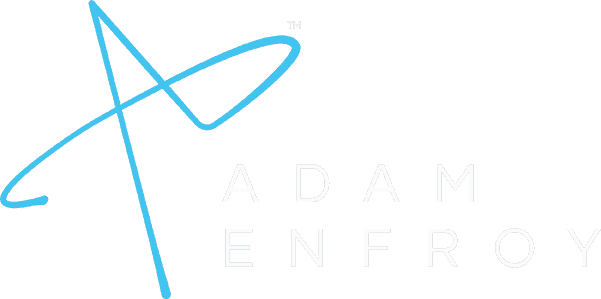Automate Your Blog with AI: Step By Step Guide for 2024

Most bloggers are burnt out.
They find themselves on a hamster wheel trying to post consistent, high-quality content.
But a smart few have found a better way.
They’re using AI to automate their blog content creation and posting – without the stress of doing it all themselves.
This article will show you a complete blog automation process you can run on autopilot.
The result?
Content creation and publishing becomes as easy as pressing a few buttons.
Prefer to watch rather than read? Here’s the video version:
The 3 Key Steps to Blog Automation
Here are the steps to follow to set up your blog automation.
1. Set Up Automation Tools
Let’s kick things off with setting up your automation tools.
I’m using Make.com, a powerhouse no-code platform that will be the backbone of your automation strategy.

First, head over to make.com and create an account.
Once you’re in, take a little time to explore the interface.
It might initially seem overwhelming, but I promise it’ll soon become easier.
As you navigate the platform, you’ll encounter terms like “scenarios,” “modules,” and “connections.”
These are the building blocks of your automation journey.
Think of:
- scenarios as your master plans
- modules as the individual tasks within those plans
- connections as the bridges between different tools.
Speaking of connections, we will connect make.com with many other tools that will make your blog automation possible.
First up is Airtable—a tool for storing and managing all your data.

Next, we’ve got Claude AI and OpenAI, your content generation powerhouses.
Claude AI helps with writing, while OpenAI will be your image prompt wizard.

Don’t forget about good old Google Docs.
It’ll be your content’s home before it goes live.
And if you’re using WordPress, we’ll connect that too for seamless publishing.

Setting up these connections might take a little time – but it’s worth it.
Each connection you make is like adding another superpower to your automation arsenal.
Remember, the goal here is to create a smooth, efficient workflow.
So take your time, play around with the connections, and don’t be afraid to experiment.
2. Developing Your Keyword Strategy
Now that our automation tools are set up, it’s time to consider keywords.
Let’s start with some keyword generation.
Sometimes you wish you had a magic wand to conjure up the perfect keywords, right?
Well, we’ve got the next best thing—AI tools!
We will use my AI Niche Hunter to do the heavy lifting.
Here’s how it works: you feed this generator your main niche.
In return, it will spit out a treasure trove of sub-niches and keyword ideas.
Once you’ve got your list, take some time to explore the suggested sub-niches and analyze the keyword lists.

Here’s a pro tip: don’t spread yourself too thin (this tool can make it easy to lose focus).
Instead of tackling every keyword, focus on one sub-niche with about 10-20 keywords.
Think of it as your content sweet spot.
When choosing your sub-niche, consider two things:
- Can you make money from it (because, let’s face it, we all need to eat), and
- Does it align with your interests or expertise?
Creating content about something you’re passionate about (and that’s monetizable) makes the whole process a lot more enjoyable.
Here’s where it gets interesting.
We’re going to mix things up with both informational and transactional keywords.
Think of it as a content cocktail—75% informational (the “how to” stuff) and 25% transactional (the “best product” type).
This blend keeps your content helpful and potentially profitable.
Before you start writing, you can take an extra step to ensure these keywords are worth your time.
This is where tools like Ahrefs come in handy.

We’ll use this tool to check search volume and keyword difficulty.
We’re looking for those hidden gems with decent search volume but aren’t too competitive.
As you’re doing your keyword research, consider this.
Sometimes, the road less traveled is the best one.
Instead of trying to compete in oversaturated markets like business or finance, why not explore some niche hobbies or specialized interests?
Finding these niches with less competition (but still plenty of potential customers) can be a goldmine.
Lastly, let’s talk about organizing your content.
Think of your sub-niche as a tree, with 5-6 main branches (your content pillars) and 3-4 smaller twigs growing from each branch (your subtopics).
This structure ensures you cover all aspects of your niche, from products and techniques to care and maintenance.
And there you have it!
Your very own, tailor-made keyword strategy.
It might seem like a lot of work upfront.
However, this foundation will make your content creation process as smooth as possible.
3. Setting Up Your Automation Workflow
Let’s get back to the automation I’m setting up.
Head over to make.com and create a new scenario.
Now, add a webhook module as your trigger.

This little guy is going to be the one who says “Go!” every time we want to create a new piece of content.
When you create a webhook, you’ll get a web address that you’ll use to make your “calls”.
This will tell the automation system that things are ready to get moving.

Next up, we’re bringing in our trusty sidekick, Airtable.
Remember all those juicy keywords we collected earlier?
Well, Airtable is going to be their new home.
Create a (data)base in Airtable with fields for your keywords.

Then, connect Airtable to make.com and set up a module to fetch your keyword data.

This connection means your Make.com workflow will always know which keyword you’re working on.
Now add a Claude AI module to your make.com scenario.
This is where we’ll generate our article outlines.
Configuring the AI prompt is a bit like training a puppy.
It might take a few tries to get it right, but once you do, it’ll be your best friend.
Don’t be afraid to test and refine your prompt until you get outlines that make you go “Wow!”
In our Claude prompt, we ask it to produce data in a specific format called JSON.
JSON (which stands for JavaScript Object Notation) is a structured way of returning data.
Why do I use this structure?
I want data to be returned to me the same way every single time.
This makes it easy to work with this data without errors popping up.
Here’s the thing – Claude will give us a long string.
We need a way to convert that long string into individual JSON items.
And that’s where our JSON parser comes in.

Add this module and configure it to structure your outline data.
It’s like translating your outline into a language all your other tools can understand.
Here are the different sections of the article:

And here’s the outline for the main contents:

Now, let’s write that article!
Here, you’ll craft a prompt that uses your outline to create full-length content.
And here’s a pro tip: include instructions for maintaining a conversational tone.
We want our articles to sound like a human, not a robot, wrote them!

But what’s an article without a picture?
Next, let’s add some visual flair with OpenAI.
Add an OpenAI module to your scenario and configure it to generate image prompts.
It’s like having a creative director on your team, coming up with cool image ideas for your articles.
Once you have your image prompt, it’s time to bring it to life.
Configure the settings to your liking – think size, style, and the works.

And don’t forget to store that image URL—we’ll need it later!
Here’s what the image generator produced:

Don’t like the image?
There are many ways to improve your prompt to get different image styles.
Now, let’s get that content ready for prime time.
Add a “markdown to HTML” converter module.
Since we’re creating a Google document, we’ll need to change the article format to one that plays nicely with this software.
Next, add a module to create a new Google Doc (so you can insert the generated article and the image).
This is where your content will live before it goes live on your blog.

We’re almost there!
Let’s update Airtable with all our hard work.
Add an Airtable update module to your scenario.
This will track which articles you’ve created and where they’re stored.

And finally, it’s time to publish to WordPress.
We will keep the article in drafts so that a human can review its content before posting.
And guess what?
You’ve just set up an entire content creation factory!
With this workflow, you can churn out high-quality, SEO-optimized content faster than ever.
What Happens After This Workflow?
Alright, we’ve got our content creation machine humming along nicely.
But here’s the thing—we’re not trying to build an army of robot writers.
We want to create content that resonates with real people.
So, let’s roll up our sleeves and add that all-important human touch to our AI-generated content.
First, put on your editor’s hat and give that AI-generated article a thorough once-over.
Read it from start to finish, just like your readers would.
As you’re reading, look out for a few key things:
- Is everything factually correct?
- Does the article flow smoothly from one point to the next?
- And most importantly, does it sound like something a real person (i.e., you) would write?
This is your chance to sprinkle in your expertise.
Do you have any personal stories that relate to the topic? Throw ’em in there!
Have you worked on projects or case studies that illustrate your points? Share those experiences!
Your readers aren’t just looking for information—they’re looking for your unique perspective.
This is also your opportunity to showcase your industry know-how.
What insights can you offer that someone couldn’t just Google?
Maybe you’ve got some predictions about where your industry is heading.
Perhaps you’ve got a controversial opinion on a popular trend.
Don’t be afraid to let your expertise shine through!
Next, ensure your content is as engaging as a fireside chat with a good friend.
Vary your sentence structure—mix short, punchy sentences with longer, more detailed ones.
It’s like creating a rhythm in your writing.
Remember to add those little transitional phrases that help your ideas flow smoothly from one to the next.
Also, ask a rhetorical question now and then.
It’s like you’re having a conversation with your reader.
“Want to know the best part?” or “Sounds too good to be true, right?”
These little questions keep your readers on their toes and make them feel involved in the discussion.
Conclusion
You’ve just learned how to automate your blog posting.
Using the right tools saves time, reduces stress, and keeps your blog running smoothly.
Now, you can focus on creating great content and growing your audience.
Finally, remember that automation is a tool, not a replacement.
Use it to handle the tasks that take up too much of your time.
Then, pour your energy into the creative parts that make your blog unique.
Further reading on AdamEnfroy.com: If you want to take your business automation to the next level, check out the best AI marketing tools to streamline your efforts.
Interested in monetizing your blog further? Explore how to make money blogging with insights from a 7-figure blogger.
To understand the broader landscape, dive into what AI marketing is and discover practical tools and examples.
Additionally, the top AI social media tools can help you manage your online presence more efficiently.





